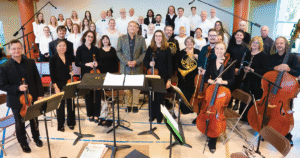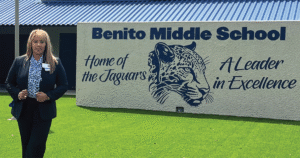By Matt Wiley
More than 25 years from now, Hillsborough County (especially New Tampa) could be hardly recognizable. With abundant growth projected for the region’s future, anything can happen. However, the groups in charge of setting plans in motion to shape the area’s future want to know what you want to see when the calendar reads January 1, 2040. By just filling out an online survey between now and Sunday, October 20, Hillsborough County residents can weigh in on how they want the county to grow.

During a special presentation at the New Tampa Regional Library on September 16, Tony LaColla, a senior planner for the Hillsborough County Planning Commission (HCPC) gave several New Tampa residents an idea of the different ways that the county could grow, as the HCPC and Hillsborough County Metropolitan Planning Organization (MPO) begin to prepare their long-range plan for 2040, entitled “Imagine 2040.”
In years past, both the HCPC and MPO have updated their respective master and long-range plans every other year. This year, the two organizations decided to combine the process into one.
“Imagine 2040” puts the county’s residents in charge of deciding how they would like to see the region grow, as the population — which currently sits at about 1.3 million — is expected to rise by another 400,000-600,000 people in the next 25 years, according to HCPC estimates. LaColla said the current growth boundary — an imaginary boundary line that helps determine zoning and land use decisions — only allows for about 67,000 more new homes.
“Twenty-five years ago, there was a lot of scrub brush in New Tampa,” LaColla said. “Now, there are a lot of homes. A lot can change in 25 years.”
LaColla laid out three scenarios for the growing county: the “Suburban Dream,” “Bustling Metro” and “New Corporate Centers.”
In the “Suburban Dream,” LaColla said that growth will just be business as usual — development will continue the way it has for the past several years, with most new homes built in suburban-style communities and with new jobs spread across the county in small office parks.
Traveling would be done mostly by automobile and would require the widening of existing roads, bigger intersections with overpass-style interchanges and other advanced traffic management systems. The growth boundary would have to be expanded into rural and agricultural lands to allow room for new homes and businesses and infrastructure would have to expand to meets demands.
The “Bustling Metro” scenario paints a slightly different picture. Instead of the current growth in the county, new homes, shopping and services would be built in mixed-use centers around bus and train stations, while older shopping areas would be revitalized. The bulk of the jobs would mostly remain in the current business districts (Downtown, Westshore, USF), but new buildings also would be added. Mass transit would play a much more significant role in the region and could include bus, rail, shuttles and bicycles. The “Bustling Metro” option would not require changing the growth boundary and would allow for the conservation of rural and agricultural lands.
Finally, there is the “New Corporate Center” option, which would see a dynamic change in the way people get around the county by adding toll lanes in interstate medians. The toll lanes would be used to connect economic centers including downtown, Westshore and USF, as well as others that would be developed along both I-75 and I-4. Homes would follow those centers. The growth boundary would expand, as would the existing roads and infrastructure systems.
However, with each growth option come a different set of pros and cons, which the “Imagine 2040” survey demonstrates in twelve different categories, including job creation, traffic delay, infrastructure cost, water use and redevelopment potential, among others.
“No matter what we do, infrastructure cost is going to be more than it is today,” LaColla said. “We’re trying to collect input from citizens to create the best hybrid scenario of these options.”
District 7 Tampa City Council member Lisa Montelione encourages New Tampa residents to take part in the survey.
“This process is one of the only times that citizens get to give their input on long-range plans,” Montelione says. “Usually, input is only heard on short-term issues in public hearings. Imagine 2040 is a chance to really have a say about you want to see in the area in the future.”
Residents are encouraged to participate in the online survey by visiting Imagine2040.org, which also features more detailed versions of each scenario, as well as the pros and cons of each.




No comment yet, add your voice below!